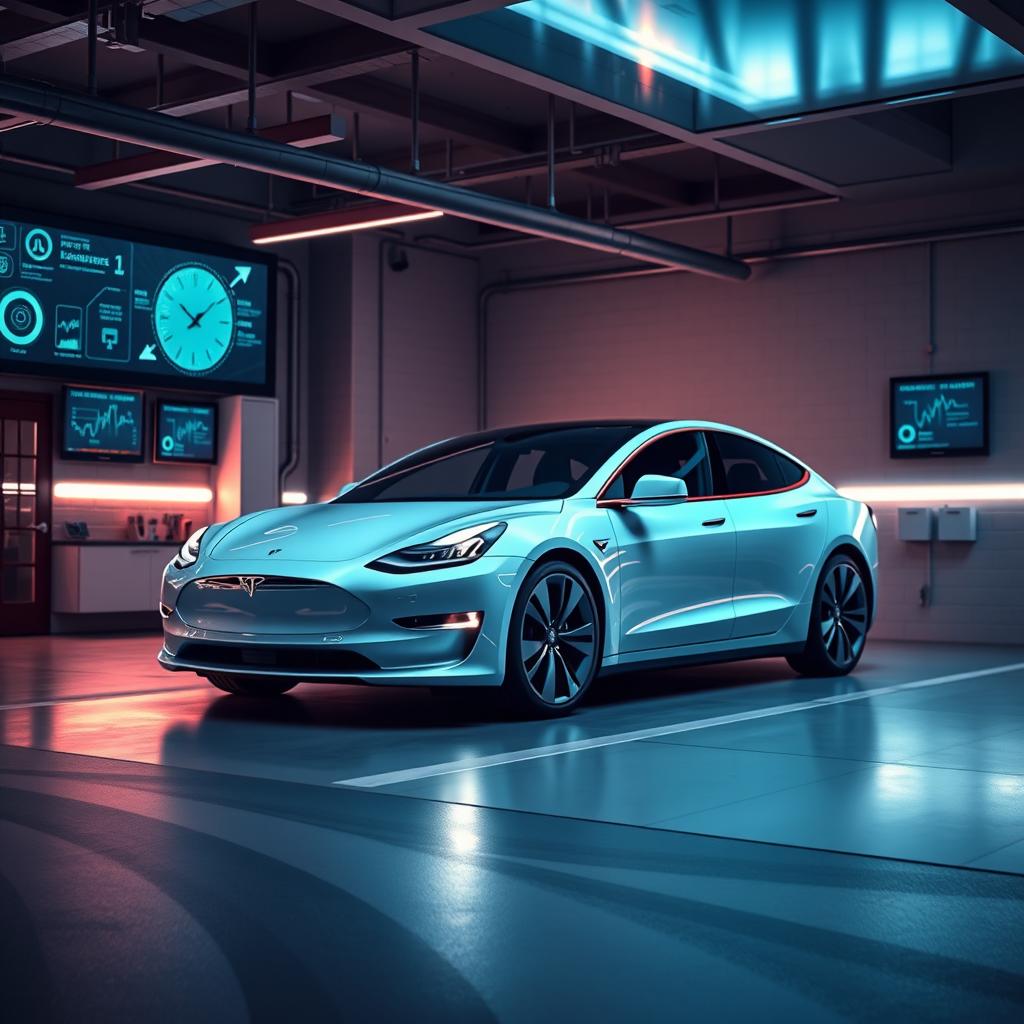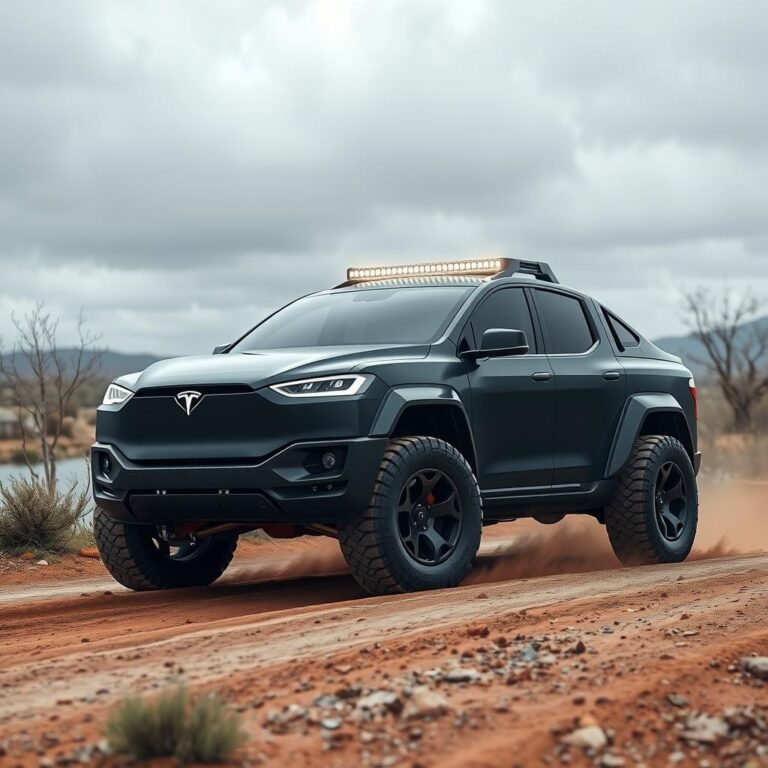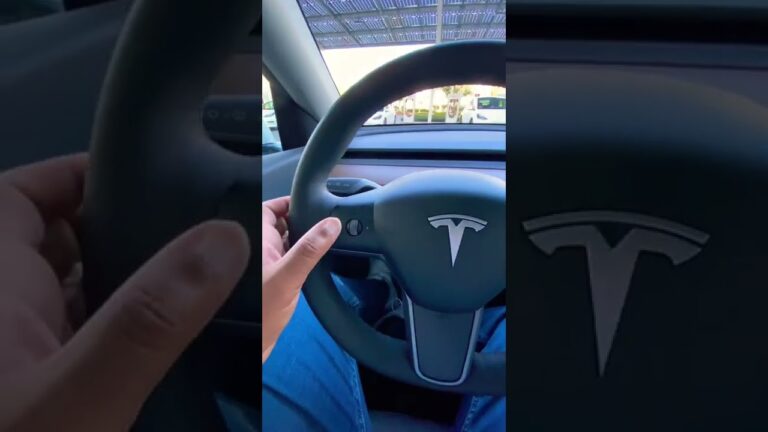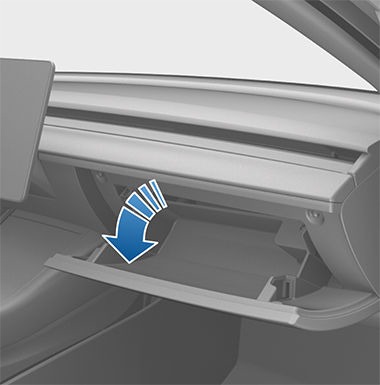Can A Tesla Car Be Charged At Home?
Can a Tesla car be charged at home? Absolutely.
In fact, charging at home is one of the biggest advantages of owning a Tesla. No more gas stations, no more waiting in line—just plug in your car overnight, and wake up to a full battery.
How to Charge a Tesla at Home
Charging a Tesla at home is simple, but you need the right setup. Here are your main options:
- Standard Wall Outlet (120V) – Slow but works in a pinch.
- 240V Home Charging (NEMA 14-50 or Wall Connector) – Faster and recommended for daily use.
- Solar + Powerwall – The most energy-efficient way to charge.
Let’s break it down.
1. Charging with a Standard Wall Outlet (120V)
If you don’t install anything special, you can still charge your Tesla using a regular household outlet (120V).
Pros:
- No installation required—just plug in.
- Good for emergency or occasional charging.
Cons:
- Extremely slow—about 3-4 miles of range per hour.
- Not practical for daily charging unless you drive very little.
Charging overnight with a standard outlet will only add around 30-40 miles—fine for short trips but not ideal for heavy driving.
2. Level 2 Home Charging (240V)
If you want a faster and more practical way to charge at home, you’ll need a 240V outlet.
Two Options for 240V Charging:
- NEMA 14-50 Outlet – A high-powered outlet (like for electric dryers).
- Tesla Wall Connector – Tesla’s official home charging station.
Charging Speeds:
| Charging Method | Miles of Range Per Hour |
|---|---|
| Standard Outlet (120V) | 3-4 miles/hour |
| NEMA 14-50 Outlet (240V) | 20-30 miles/hour |
| Tesla Wall Connector (240V) | 30-44 miles/hour |
Installing a 240V Home Charger
To install a 240V charger, you’ll need an electrician to set it up. Costs vary but expect to pay $500–$2,000 depending on your home’s electrical system.
Why Use a Tesla Wall Connector?
Tesla’s Wall Connector offers:
- Faster charging speeds.
- Wi-Fi connectivity for updates.
- Better integration with Tesla’s energy system.
If you drive a lot, investing in a Wall Connector is a no-brainer.
3. Charging a Tesla with Solar Power
Want to charge your Tesla for free? Solar panels + Powerwall make it possible.
How It Works:
- Solar panels generate electricity.
- Excess power is stored in a Tesla Powerwall.
- Your Tesla charges using clean, renewable energy.
Benefits of Charging with Solar:
- Zero fuel costs—charge for free using the sun.
- Energy independence—no reliance on the grid.
- Eco-friendly—reduce your carbon footprint.
The upfront cost of solar can be high, but long-term savings make it worth it.
How Much Does It Cost to Charge a Tesla at Home?
Charging a Tesla at home is way cheaper than buying gas.
Average Home Charging Costs:
- U.S. electricity rates: $0.10–$0.20 per kWh.
- Full Tesla charge (75 kWh battery): $7–$15.
- Cost per mile: 3–5 cents (gas cars: 10–20 cents per mile).
Charging at home saves hundreds of dollars per year compared to fueling a gas car.
FAQs About Charging a Tesla at Home
Can I charge a Tesla with a regular outlet?
Yes, but it’s slow—about 3-4 miles of range per hour.
What’s the best way to charge a Tesla at home?
A 240V outlet (NEMA 14-50) or Tesla Wall Connector provides the best speed and efficiency.
How long does it take to charge a Tesla at home?
With a standard outlet, it can take days. With a Tesla Wall Connector, a full charge takes 6-12 hours.
How much does it cost to charge a Tesla at home?
On average, $7–$15 for a full charge, depending on electricity rates.
Can I charge a Tesla with solar panels?
Yes! With solar panels and a Powerwall, you can charge your Tesla using clean energy.
The Verdict: Can a Tesla Be Charged at Home?
Yes, and it’s the best way to charge.
Home charging is cheaper, more convenient, and eliminates the hassle of gas stations. Whether you use a standard outlet, a 240V charger, or solar power, charging at home makes owning a Tesla even better.

What’s the Best Home Charging Setup for a Tesla?
If you want the best home charging experience, here’s what you need:
- A 240V outlet (NEMA 14-50) or Tesla Wall Connector for fast charging.
- Professional installation by a licensed electrician.
- Wi-Fi connectivity for software updates (if using a Wall Connector).
- Optional: Solar panels and Powerwall for energy independence.
This setup ensures that your Tesla is always ready to go without relying on public chargers.
Home Charging vs. Public Charging: Which is Better?
Public chargers like Tesla Superchargers are great for road trips, but for daily use, home charging wins.
Comparison Table:
| Feature | Home Charging | Public Charging |
|---|---|---|
| Convenience | Charge overnight at home | Need to drive to a station |
| Charging Speed | 6-12 hours for full charge | 30-60 minutes at Superchargers |
| Cost | Cheaper (avg. $7–$15 per charge) | More expensive (avg. $20–$30 per charge) |
| Availability | Always available at home | May need to wait for a spot |
For daily charging, home is the clear winner. Public charging is best for long-distance trips.
How to Reduce Home Charging Costs
Want to save even more on home charging? Here’s how:
1. Charge at Off-Peak Hours
- Many utility companies offer time-of-use (TOU) rates.
- Charging at night can be 50% cheaper than peak hours.
2. Use Solar Power
- Install solar panels to generate free electricity.
- Store excess energy in a Powerwall to use at night.
3. Set a Charging Limit
- Charge up to 80% instead of 100% to extend battery life.
- Use Tesla’s Scheduled Charging feature to automate charging times.
With the right strategy, home charging can be nearly free.
Can You Use a Regular Extension Cord to Charge a Tesla?
No! Tesla does not recommend using extension cords for charging. Here’s why:
- Most extension cords aren’t rated for high-power charging.
- Overheating can occur, creating a fire risk.
- Charging speeds will be much slower.
If you need extra reach, install a proper charging setup instead.
How Weather Affects Home Charging
Cold and hot weather can impact charging efficiency.
Cold Weather Charging:
- Battery warms up slower, reducing charging speed.
- Preconditioning the battery helps (use Tesla’s Scheduled Departure feature).
Hot Weather Charging:
- High temperatures can cause battery overheating.
- Charge in a shaded or indoor area when possible.
Extreme temperatures can slightly reduce efficiency, but Tesla’s battery management system helps mitigate issues.
FAQs About Charging a Tesla at Home
Can I charge a Tesla with a regular outlet?
Yes, but it’s slow—about 3-4 miles of range per hour.
What’s the best way to charge a Tesla at home?
A 240V outlet (NEMA 14-50) or Tesla Wall Connector provides the best speed and efficiency.
How long does it take to charge a Tesla at home?
With a standard outlet, it can take days. With a Tesla Wall Connector, a full charge takes 6-12 hours.
How much does it cost to charge a Tesla at home?
On average, $7–$15 for a full charge, depending on electricity rates.
Can I charge a Tesla with solar panels?
Yes! With solar panels and a Powerwall, you can charge your Tesla using clean energy.
The Verdict: Can a Tesla Be Charged at Home?
Yes, and it’s the best way to charge.
Home charging is cheaper, more convenient, and eliminates the hassle of gas stations. Whether you use a standard outlet, a 240V charger, or solar power, charging at home makes owning a Tesla even better.



